The Futurist movement is easy prey for the kind of historical generalisation and polemical flourish that makes for a sellout exhibition. There are so many controversial labels attached to them: misogynists, belligerents, fascists. The Futurists are famous for considering war ‘the world’s only hygiene,’ wanting to ‘scorn’ all women and calling for the destruction of ‘museums, libraries, academies of every kind.’ It’s not hard to see why Futurism has also become one of the most neglected canonical movements in modern art.
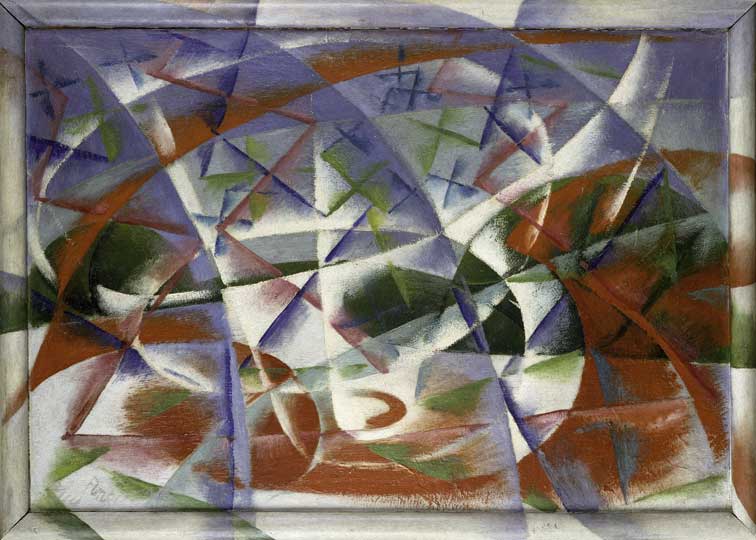
Abstract Speed + Sound (1913–14), Giacomo Balla © 2013 Artists Rights Society (ARS), New York / SIAE, Rome Photo: Courtesy Solomon R. Guggenheim Foundation, New York
Yet ‘Italian Futurism, 1909–1944: Reconstructing the Universe’ at the Guggenheim has avoided these oversimplifications. This exhibition is includes over 360 works, from painting and sculpture to ceramics, fashion and theatre. With the largest, and most diverse, collection of Futurist works ever displayed outside of Italy, it is impossible to tie Futurism into a neat polemical bow. Most importantly, this exhibition examines the movement as a whole, including both its more celebrated ‘Heroic’ phase (1909–1916) and its later, lesser known, incarnation, ‘Second Futurism’, which lasted until the early 1940s.
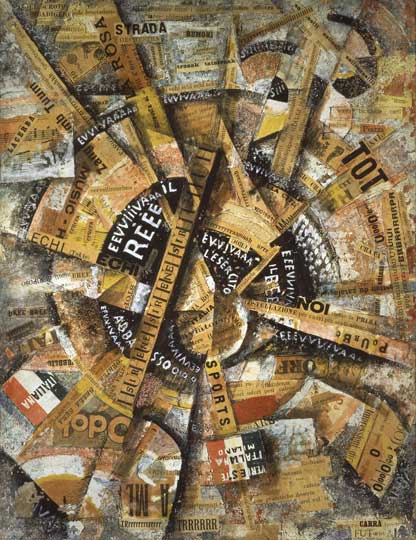
Interventionist Demonstration (1914), Carlo Carrà © 2013 Artists Rights Society (ARS), New York / SIAE, Rome Photo: Courtesy Solomon R. Guggenheim Foundation, New York
No one loved manifestos as much as the Futurists, and these proclamations, which were also performed in events called ‘Serate’ (Evenings), feature heavily throughout the exhibition. The show opens appropriately, with F.T. Marinetti’s first Futurist Manifesto published in the French newspaper Le Figaro in 1909. After facing this document, which exalts in modernity and paints Marinetti as the prophet of the mechanised world, it’s perplexing to encounter the comparatively traditional paintings of Luigi Russolo, Giacomo Balla, Umberto Boccioni and Gino Severini.

The Hand of the Violinist (The Rhythms of the Bow) (1912), Giacomo Balla © 2013 Artists Rights Society (ARS), New York / SIAE, Rome
Far from the promise of earth-shattering originality and innovation, the paintings are a cocktail of Expressionism, Divisionism, Pointillism, and Cubism. Apart from a few exceptions, such as Balla’s Abstract Speed and Sound (1913–14), which feels contemporary in its evocation of stencil, there is a clear struggle to depict movement and speed beyond simply blurring the image. Indeed, in this first phase of Futurism, the written word still dominated. The most genuinely avant-garde invention was Marinetti’s Parole Libere (Words in Freedom), onomatopoeic renderings of the sound of air raids in swirling letters: ‘Bum bum bum, Zang Tumb Tumb.’
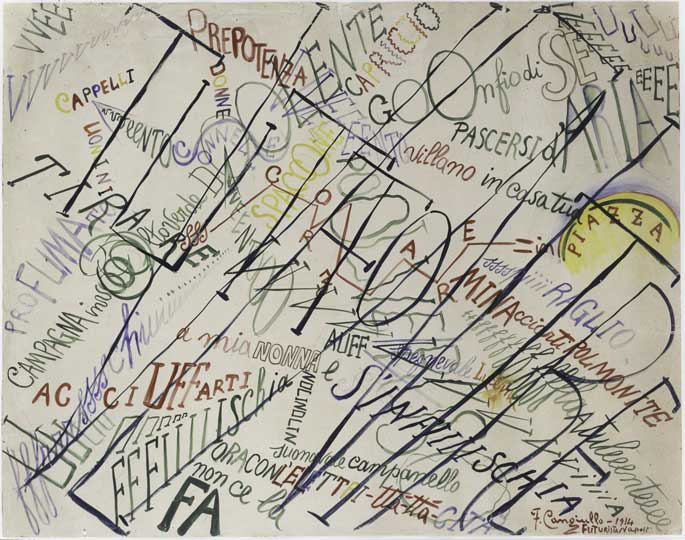
Large Crowd in the Piazza del Popolo (1914), Francesco Cangiullo © 2013 Artists Rights Society (ARS), New York / SIAE, Rome
This exhibition follows Futurism as it liberates various mediums, inspiring advanced poetry, performance art, graphic design and spreading into popular culture. From his wooden toys and puppet shows to Campari ads and waistcoats, Fortunato Depero seems to represent the turning-point in this evolution. His co-authored manifesto with Balla, Futurist Reconstruction of the Universe (1915) from which this exhibition takes its name, called for this liberation of media and exploration of senses.
The most striking of these explorations include Marinetti’s tactile creation Sudan-Paris (1920), which allows you to literally feel your way through the textures of the Sudan and Paris; Russolo’s exploration of noise music, and Balla’s stage sets for Igor Stravinsky’s Fireworks. These works are significant because they stress the importance of the Futurists by emphasising their multidisciplinary interests, which laid the groundwork for later avant-garde movements like Dada.
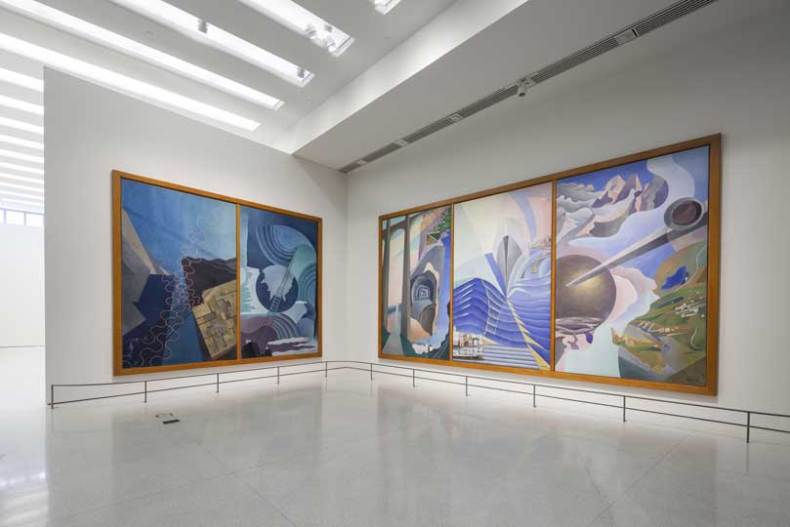
Installation view: ‘Italian Futurism, 1909–1944: Reconstructing the Universe’, Solomon R. Guggenheim Museum, New York, February 21–September 1, 2014 Photo: Kris McKay © SRGF
The exhibition reaches a dramatic finale with five enormous murals, the Synthesis of Communications (1933–4) by Benedetta Cappa (who married Marinetti). This is the first time these murals have left the central post office in Palermo, Sicily. However, these undulating blue giants do more than simply illustrate different modes of modern communication. As Benedetta was such a strong advocate for women, they succeed in merging the Futurist concept of modernity with an empowered female figure.
In keeping with the tone of the exhibition, their careful display does not re-write but certainly reframes our perceptions of Futurism. The fact that the Guggenheim itself, as a building, manages to marry these ideals of movement, modernism and mechanism, is the happiest accident that makes the display of these works so uniquely suited to this space.
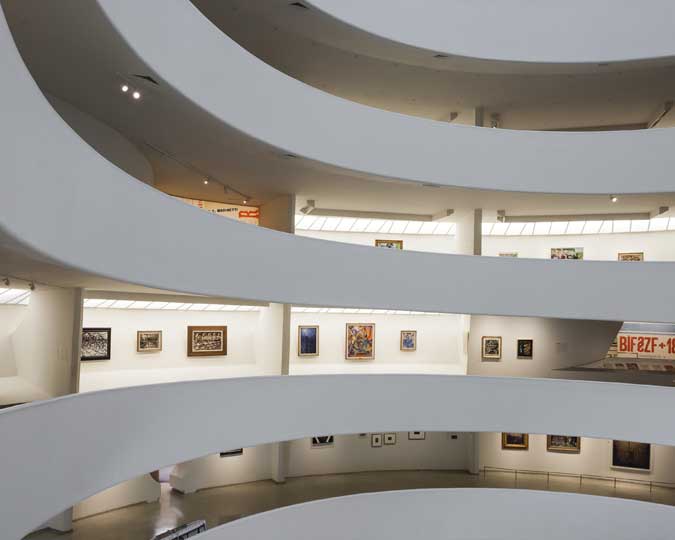
Installation view: ‘Italian Futurism, 1909–1944: Reconstructing the Universe’, Solomon R. Guggenheim Museum, New York, February 21–September 1, 2014 Photo: Kris McKay © SRGF
‘Italian Futurism, 1909–1944: Reconstructing the Universe’ is at the Guggenheim, New York, until 1 September 2014.
Related Articles:
‘La Bella Figura’ at Max Wigram Gallery (Rosalind McKever)
Protest at the Guggenheim over Saadiyat Island labour conditions (Imelda Barnard)
Unlimited access from just $16 every 3 months
Subscribe to get unlimited and exclusive access to the top art stories, interviews and exhibition reviews.

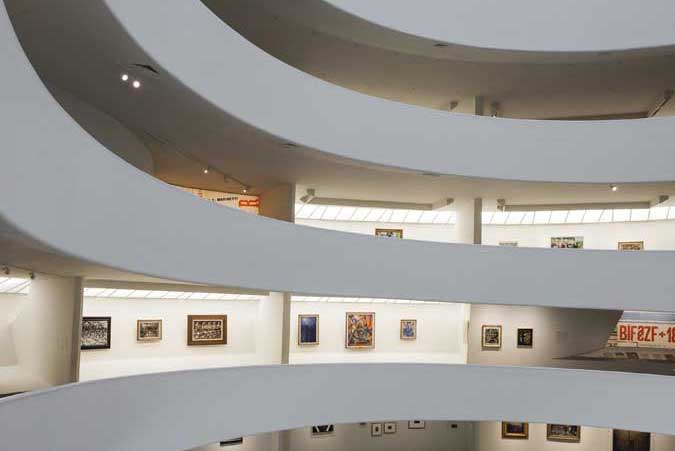
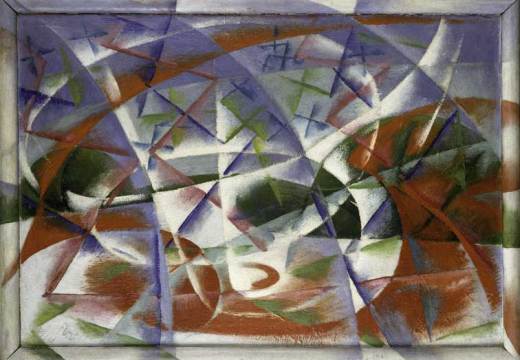



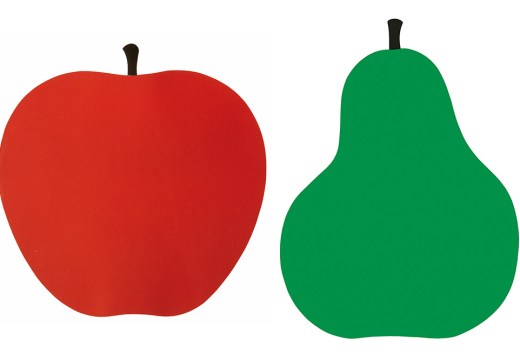
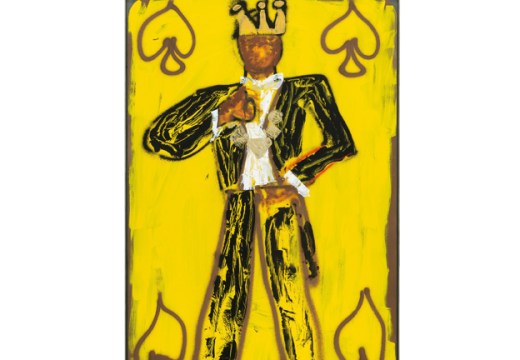






![Masterpiece [Re]discovery 2022. Photo: Ben Fisher Photography, courtesy of Masterpiece London](http://www.apollo-magazine.com/wp-content/uploads/2022/07/MPL2022_4263.jpg)
Has the Fitzwilliam lost the hang of things?